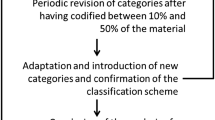Abstract
The banking system plays an important role in the modern Indian economy. Banking system had undergone a massive change or rather transformation post-1991 when banks have started seeing the face of competition from private and international players all around the world. Social media boon has also impacted banking sector, and use of social media for banking sector is increasing since past few years’. Present research focuses on how Indian Banks are using and can use social media as part of their strategy. This research has four major social media services as scope of the study for Indian Banks. These social media platforms are Facebook, Twitter, LinkedIn, and YouTube. Data for this research was collected through the official Web site of the banks. Kietzmann honeycomb model was used to analyze the collected data in terms of social media platform used by these private and public sector banks. This study focuses on Indian Banks which includes private and public sector banks together. Findings show that private sector banks are comparatively more active as compared to public sector banks. Researchers have shown interesting analysis in the paper which will be useful to Indian Banks.
Access this chapter
Tax calculation will be finalised at checkout
Purchases are for personal use only
Similar content being viewed by others
References
Arti, C., Akhilesh, R., Rajiv, D., & Mita, M. (2018). a working paper on use of social media by selected Indian public sector banks. In 2018 IEEE Punecon Conference, Pune
Ashley, C., & Tuten, T. (2015). Creative strategies in social media marketing: An exploratory study of branded social content and consumer engagement. Psychology and Marketing, 32(1), 15–27.
Castelo Branco, M., & Lima Rodrigues, L. (2006). Communication of corporate social responsibility by Portuguese banks: A legitimacy theory perspective. Corporate Communications: An International Journal, 11(3), 232–248
Hanna, R., Rohm, A., & Crittenden, V. L. (2011). We’re all connected: The power of the social media ecosystem. Business Horizons, 54(3), 265–273.
https://www.rbi.org.in/commonman/english/scripts/banksinindia.aspx#NB. Accessed on 03.02.2018
https://about.linkedin.com/. Accessed on 05.02.18
https://about.twitter.com/. Accessed on 04.02.18
https://en.wikipedia.org/wiki/Facebook. Accessed on 02.02.18
Kaplan, A. M., & Haenlein, M. (2010). Users of the world, unite! The challenges and opportunities of social media. Business Horizons, 53(1), 59–68.
Kietzmann, J., Hermkens, K., & McCarthy, I. P. (2011). Social media? Get serious! Understanding the functional building blocks of social media. Business Horizons, 54(3), 241–251.
Li, C., & Bernoff, J. (2008). Groundswell: Winning in a World Transformed by Social Technologies. Harvard Business School Press
Mitic, M., & Kapoulas, A. (2012). Understanding the role of social media in bank marketing. Marketing Intelligence and Planning, 30(7), 668–686.
Murdough, C. (2009). Social media measurement: It’s not impossible. Journal of Interactive Advertising, 10(1), 94–99.
O’Driscall, S. (2018). The social engagement journey, Ant’s eye view. Available at: www.antseyeview.com/social-journey accessed on December 2018
Papacharissi, Z. (2009). The virtual geographies of social networks: A comparative analysis of Facebook, LinkedIn and ASmallWorld. New Media and Society, 11(1–2), 199–220
Safko, L. & Brake, D. K. (2009). The social media Bible: Tactics, tools, and strategies for business success new jersey. John Wiley & Sons, Inc.
Skeels, M. and Grudin, J. (2009). When social networks cross boundaries: A case study of workplace use of Facebook and Linkedin. In Proceedings of the ACM 2009 International Conference on Supporting Group Work (pp. 95–104). Sanibel Island
Tsitsi Chikandiwa, S., Contogiannis, E. and Jembere, E. (2013). The adoption of social media marketing in South African banks. European Business Review, 25(4), 365–381
Author information
Authors and Affiliations
Corresponding author
Editor information
Editors and Affiliations
Rights and permissions
Copyright information
© 2022 The Author(s), under exclusive license to Springer Nature Singapore Pte Ltd.
About this paper
Cite this paper
Chandani, A., Divekar, R., Neeraja, B., Mehta, M., Atiq, R. (2022). A Study to Analyze Use of Social Media by Private and Public Sector Banks in India. In: Chandani, A., Divekar, R., Nayak, J.K. (eds) Achieving $5 Trillion Economy of India. Springer Proceedings in Business and Economics. Springer, Singapore. https://doi.org/10.1007/978-981-16-7818-9_8
Download citation
DOI: https://doi.org/10.1007/978-981-16-7818-9_8
Published:
Publisher Name: Springer, Singapore
Print ISBN: 978-981-16-7817-2
Online ISBN: 978-981-16-7818-9
eBook Packages: Business and ManagementBusiness and Management (R0)




